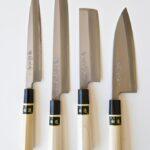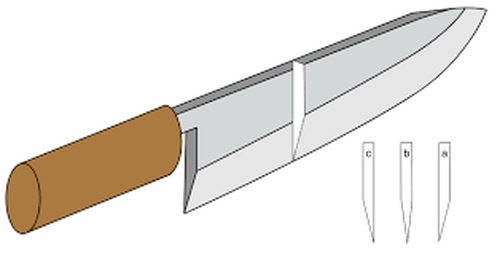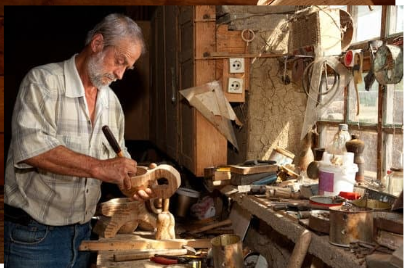Step-by-Step Guide to Sharpen a Japanese Kitchen Knife
How to Sharpen a Japanese Kitchen Knife

Japanese kitchen knives are known for their sharpness and precision, making them essential tools for any home cook. However, maintaining that sharpness requires proper care and sharpening techniques. Here is a step-by-step guide to the traditional way to sharpen a Japanese kitchen knife and keep it in optimal condition:
- Gather equipment: To sharpen your Japanese kitchen knife, you will need a sharpening stone (also called a whetstone), a stone holder or wet towel to keep the stone stable, and water to soak and lubricate the stone. An electric knife sharpener is the (better) alternative.
- Soak the stone: Before you begin sharpening, soak your whetstone in water for at least 5-10 minutes until it’s fully saturated. This helps lubricate the stone and prevents the blade from sticking during sharpening.
- Stabilize the stone: Place it on a stone holder or wet towel to prevent it from moving around while sharpening the knife.
- Determine the bevel angle: Japanese kitchen knives typically have a bevel angle between 10-15 degrees, while Western chef knives usually have a bevel angle of around 20-25 degrees. This difference makes Japanese knives sharper but also more delicate. Start by placing the blade flat on the stone to find the correct angle, and slowly lift the spine until you reach the desired angle.
- Begin sharpening: Hold the knife at the determined angle and gently glide the blade across the stone in a sweeping motion, moving from the heel to the tip of the blade. Apply even pressure throughout the process. Repeat this motion several times on one side before switching to the other side of the blade.
- Check for a burr: As you sharpen, a small metal burr will form on the edge of the blade. This is a sign that you have successfully sharpened one side of the knife. Once you feel a burr along the entire length of the blade, switch to the other side and repeat the process.
- Remove the burr: Once you have sharpened both sides of the blade, use a finer grit stone or a honing rod to remove the burr and polish the edge gently.
- Rinse and dry: After sharpening, rinse the knife and stone under running water to remove any metal shavings. Dry the knife thoroughly with a soft cloth before storing it.

Chef’s Choice Trizon XV Knife Sharpener
One electric knife sharpener brand that can be used to sharpen Japanese kitchen knives with their 15-18 degree bevel angle is Chef’sChoice. Their Trizor XV model is reliable, fast, and easy to use, and it puts a razor edge on almost any kind of knife, including those with a 15-18 degree bevel angle.
Caring for Your Japanese Kitchen Knife:
- Store your knife properly: Use a knife block, magnetic strip, or protective sheath to store your knife safely and prevent accidental damage.
- Clean and dry your knife after each use: Wash your knife by hand with warm, soapy water and dry it immediately with a soft cloth to prevent rust and corrosion.
- Use a proper cutting surface: Use a wooden or plastic cutting board to protect the blade from damage. Avoid cutting on hard surfaces like glass or metal.
- Sharpen your knife regularly: Depending on how often you use your knife, sharpen it every few months to maintain its sharpness and performance.
By following these steps and taking proper care of your Japanese kitchen knife, you’ll enjoy years of precise and efficient cutting in your kitchen. Here’s a primer on kitchen knives from Escoffier Culinary School you will find helpful.


















One Comment